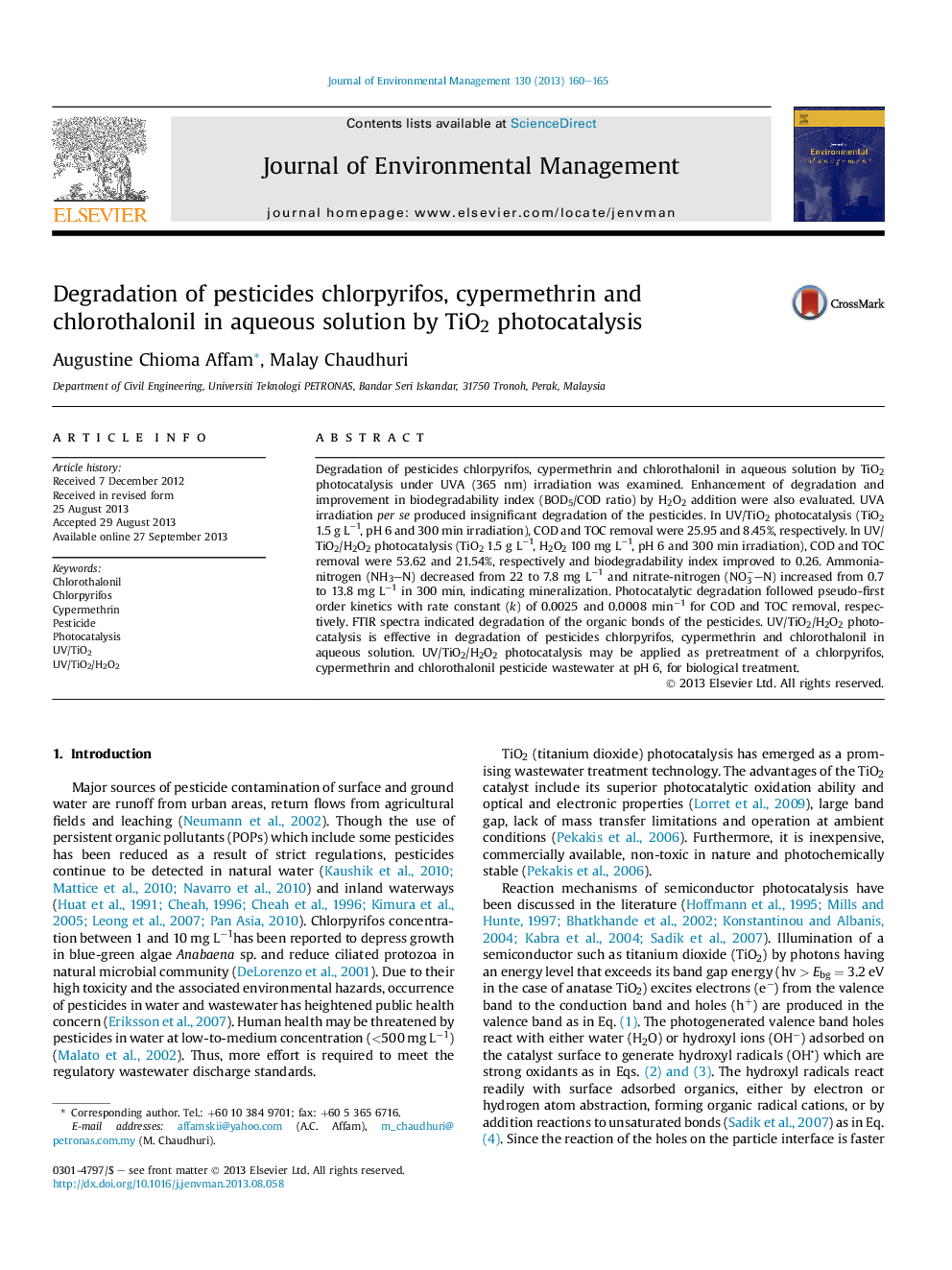| Article ID | Journal | Published Year | Pages | File Type |
|---|---|---|---|---|
| 1056083 | Journal of Environmental Management | 2013 | 6 Pages |
•The degradation of pesticides in aqueous solution by TiO2 photocatalysis was studied.•The UV/TiO2/H2O2 process indicated mineralization of the pesticides in solution.•Under optimum conditions, the process kinetic constant and R2 value were obtained.•The FTIR spectroscopy was also used to measure the organic bond modification.
Degradation of pesticides chlorpyrifos, cypermethrin and chlorothalonil in aqueous solution by TiO2 photocatalysis under UVA (365 nm) irradiation was examined. Enhancement of degradation and improvement in biodegradability index (BOD5/COD ratio) by H2O2 addition were also evaluated. UVA irradiation per se produced insignificant degradation of the pesticides. In UV/TiO2 photocatalysis (TiO2 1.5 g L−1, pH 6 and 300 min irradiation), COD and TOC removal were 25.95 and 8.45%, respectively. In UV/TiO2/H2O2 photocatalysis (TiO2 1.5 g L−1, H2O2 100 mg L−1, pH 6 and 300 min irradiation), COD and TOC removal were 53.62 and 21.54%, respectively and biodegradability index improved to 0.26. Ammonia-nitrogen (NH3–N) decreased from 22 to 7.8 mg L−1 and nitrate-nitrogen (NO3−–N) increased from 0.7 to 13.8 mg L−1 in 300 min, indicating mineralization. Photocatalytic degradation followed pseudo-first order kinetics with rate constant (k) of 0.0025 and 0.0008 min−1 for COD and TOC removal, respectively. FTIR spectra indicated degradation of the organic bonds of the pesticides. UV/TiO2/H2O2 photocatalysis is effective in degradation of pesticides chlorpyrifos, cypermethrin and chlorothalonil in aqueous solution. UV/TiO2/H2O2 photocatalysis may be applied as pretreatment of a chlorpyrifos, cypermethrin and chlorothalonil pesticide wastewater at pH 6, for biological treatment.
